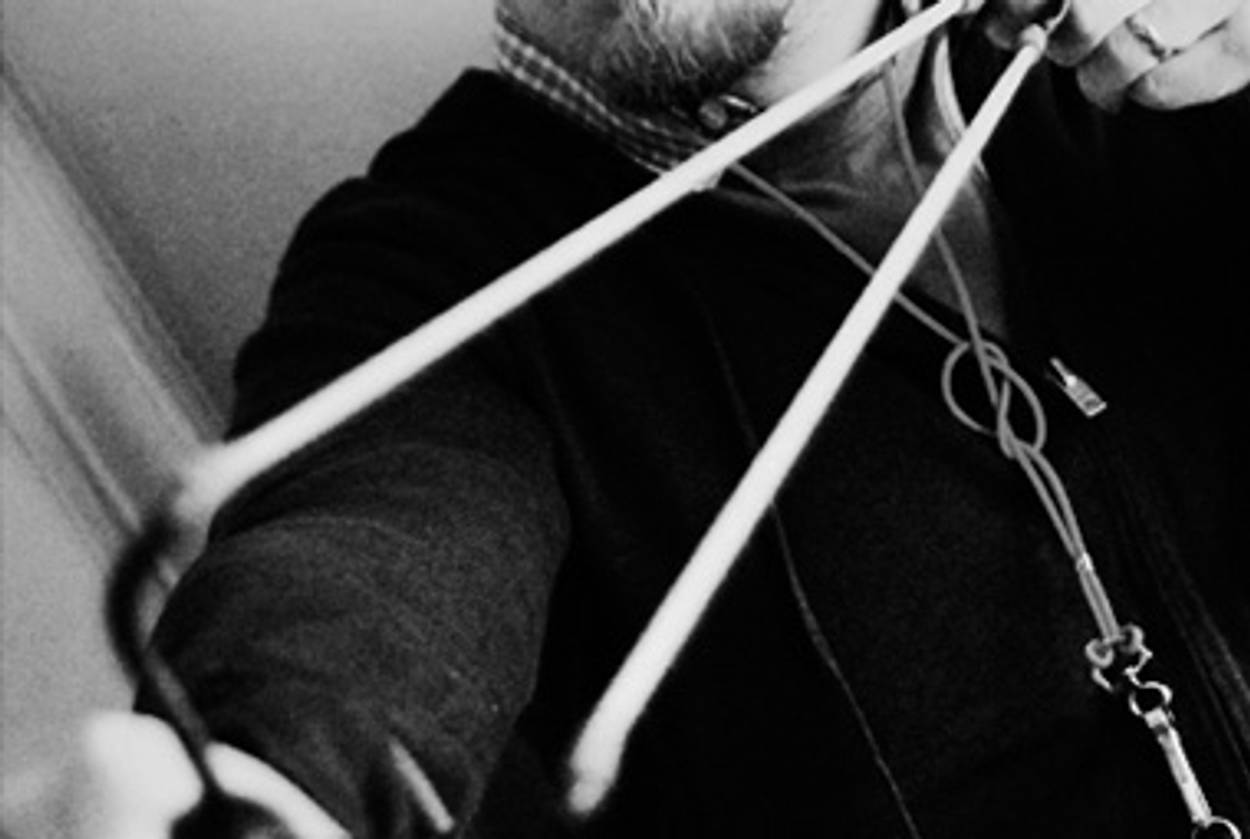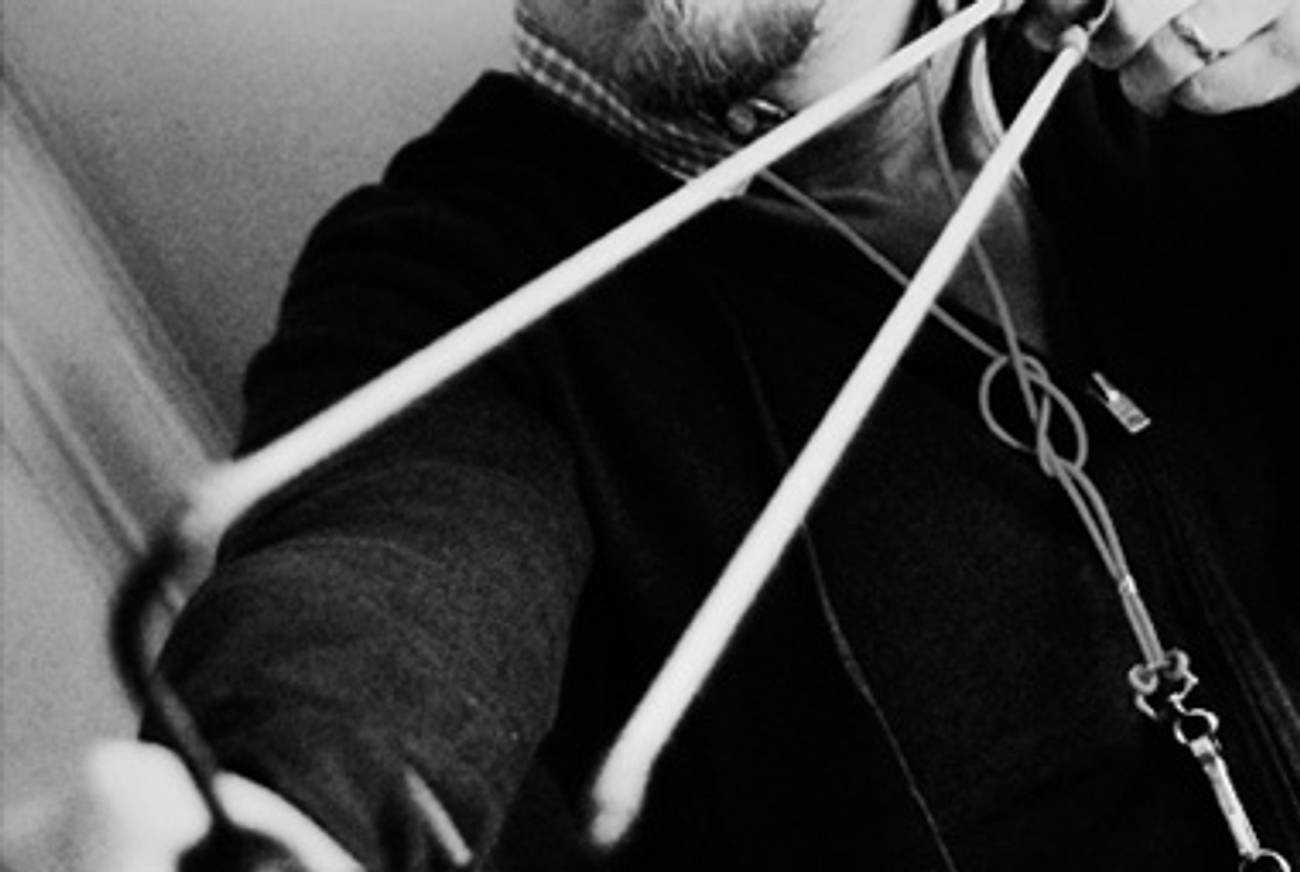Taking Aim
In his immensely ambitious debut novel, Adam Levin sets his sights on a new Goliath: the American Jewish canon




Are we approaching the end of days? In May, the young fiction writer (and Tablet Magazine contributor) Joshua Cohen came out with Witz, a preposterously long, immensely ambitious novel about a child-man who may be the messiah and who heralds the end of the Jews as we know them. “Witz is a novel about the Last Jew that’s also trying, trying, to be the Last Jewish Novel,” Cohen said in an interview at the time. “To found the genre of genre-annihilation, that was the intent.”
Now, uncannily, first-time novelist Adam Levin is set to publish The Instructions, a preposterously long, immensely ambitious novel on the very same subject. And as if in response to Cohen’s challenge, The Instructions proclaims itself something like the first post-Jewish novel, one that leaves behind the modern-day Jewish literary tradition and starts over. That is to say, The Instructions purports to be a new work of scripture.
The Instructions is in fact a vital work of—no getting around it—American Jewish literature because it imagines that the genre is indeed through and asks what can be written in its place. A Nabokovian book-within-a-book, The Instructions, purports to be a divinely-inspired work by its antihero, teenage would-be messiah Gurion Maccabee. It is Gurion’s astonishing conceit that, out of boredom with the current state of Jewish fiction, he will write, and enact, the word of God instead. “I am not even remotely interested in writing a two-page short story about made-up Jewish people eating dinner,” he explains, “so instead I’ve written scripture.” This is, like most things Gurion says, at least a partial lie: An extraordinary scene in which Jewish people eat dinner begins three pages later. But we also know what he means. Most of the tropes we associate with American Jewish literature have either vanished here or been somehow reversed. The Holocaust and how we remember it get barely a mention. There is no sex, no messy family dynamics. No one is trying to assimilate, join a club that won’t have him as a member, or escape Judaism. Rather, Gurion and his followers want to intensify their Judaism. They are “Israelites”: stronger, prouder, better-armed, more God-fearing versions of the Jews, their predecessors. So what’s left to talk about when we trade the American Jewish novel for ersatz religious-Zionist scripture? Plenty, it turns out: chosenness, nationhood, violence, power, the end of the world—the most important Jewish questions, perhaps, of our day.
Over more than a thousand pages, Gurion turns four days of his childhood in Chicago’s northern suburbs into an epic journey from bondage (in a junior-high lockdown program for behavior problems) to freedom, with unmistakable echoes of the Exodus. Or at least that’s what he wants us to read: This is his Pentateuch, and he has constructed himself as a latter-day Moses. The reader may come to suspect, however, that he is merely a pint-size cult leader. Only God (and perhaps Levin) knows for sure. Gurion’s endless, and endlessly captivating, shaggy-dog story—narrated in a pidgin of invented youth lingo, untranslated bits of Yiddish and Hebrew, extended biblical commentaries, and God-speak (“and I saw that it was good”)—is set in a world just supernatural enough to keep us wondering whether our narrator might be the messiah after all.
A few years after his arrival is prophesied by Rabbi Menachem Schneerson (himself considered the messiah by some Lubavitcher Hasidim), Gurion is born with birthmarks that spell “Adonai,” a mouth full of teeth, and a genius for both leadership (assisted by his ex-IDF-sniper mother) and scholarship (refined by his attorney father, Judah Maccabee). His talent for demagoguery appears early, too. Gurion’s Jewish day school classmates revere him; they are the first to float the messiah theory. Gurion finds a textual loophole that keeps them—and himself—in a state of suspended disbelief. A popular interpretation of Maimonides holds that a potentialmessiah arises in every generation, though none will be actualized until the time is right. He’s probably not the messiah, but one never knows for sure.
Things begin to go downhill when Gurion, age 9, assaults a teacher who makes fun of his messianic aspirations. He is expelled and sent to another day school. After a local anti-Semitic incident, he arms his new classmates with homemade weapons (slingshots—there’s no cap on the number of biblical heroes he hopes to be identified with), and delivers the first of many sermons that seem to borrow rhetoric from extremist settler groups. “Never again will we cower amidst the masses of the Roman and Canaanite children,” he proclaims. “Blessed is Elohim, Who blesses our weapons.” He gets kicked out of that school, too.
The main action of The Instructions takes place as Gurion, now 10, organizes his fellow inmates in “the Cage” at Aptakisic Junior High, a public school, Cuckoo’s Nest-style. Meanwhile, day-school boys around the city await his instructions. As his two armies line up behind him, Gurion becomes increasingly convinced that he is the savior of the Jews. Things get very dark from there.
Gurion continually diverts us with a Torah’s-worth of memorable subplots. A day-school playground on the morning of the World Trade Center attacks is suffused with terrifying euphoria as the grade-schoolers realize they have finally “become the underdog.” A schism erupts between Jewish and non-Jewish members of the Shovers, a fratty crew at Aptakisic, when a Christian student wants to include an ichthys among the symbols on the group’s identifying scarves. And Gurion’s family is increasingly harassed by Jewish community members when (in a nod to the Skokie affair) Judah Maccabee takes on a neo-Nazi client.
These stories pile up, slowly building evidence for Gurion’s central thesis: Everyone wants, above all else, a pretext or opportunity for doing violence. This bleak view is a hallmark of the teen boy literary canon, to which The Instructions owes much. Behind the unassuming visage of the meekest band geek is a bully whose bloodthirst will be unleashed if he is simply given the chance. And beneath the responsible patter of authority figures is an unalloyed desire to monopolize the legitimate use of violence. “Fear is contempt,” as Gurion’s best friend puts it, “whether the fearful know it or not.”
Gurion believes this cycle of violence is ennobling, and that with God and himself on their side, the Jews will win. This is an easy enough belief system to pin on a Jack Tytell figure crouching with a rifle on a Hebron hilltop. But Gurion struggles to make you, the reader—or at least the Jewish reader—complicit. This is how the scriptural form produces its most unsettling effect: Scriptures directly address followers, or would-be followers, so if you are a Jew reading The Instructions, you are harangued to grab a slingshot and join up. I can only hazard a guess that as a non-Jewish reader, you would not feel so welcome. If, as Gurion likes to remind us, some nags have always considered American Jewish literature a shande far di goyim because it airs vast regions of unsightly Jewish shame, Levin has written a daunting “Israelite” novel with a big “Jews Only” sign on it, exposing vast regions of unsightly Jewish pride.
One way to read The Instructions might be as a giant postmodern gag about the impossibility of ceasing to write American Jewish novels, because wedged between the apocalyptic stuff is a gorgeous portrait of an ordinary Jewish community. Not just Levin but Gurion knows this perfectly well, and to remind us, he constantly looks over his shoulder to his idol Philip Roth. Though he insists his own project is a post-Rothian (because post-Jewish) one, he protests too much.
Ultimately, though, it’s not just the fate of the American Jewish novel, but the fate of the Jewish people—and their relationship to chosenness, nationhood, violence, power, messianism—that is at stake here. I don’t want to give away too much, but let’s just say a hostage situation arises, during which Gurion tells a hostage negotiator to get Roth on the phone. This is a pretty good joke—a young Jewish writer is so desperate for a pat on the head from his literary hero that he sets up a life-or-death situation that will force the author to talk to him.
But Levin won’t let it rest there. Roth finally does get on the phone. “So what do you want from me?” he asks.
Nothing, says Gurion. “You’re hard to get a hold of. You bought me fifty-something minutes.”
In the meantime, he has beaten a boy senseless.
Marissa Brostoff, a doctoral student in English at the CUNY Graduate Center, is a former staff writer at Tablet and the Forward.
Ari M. Brostoff is Culture Editor at Jewish Currents.